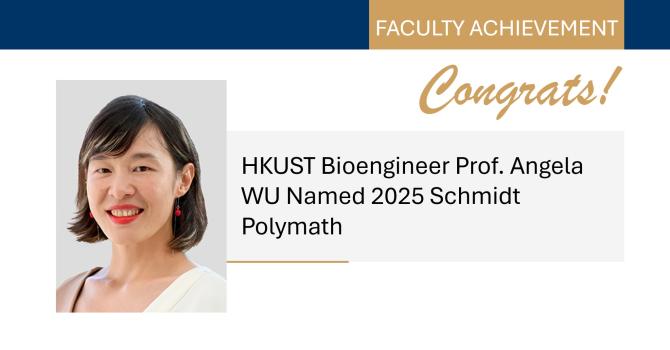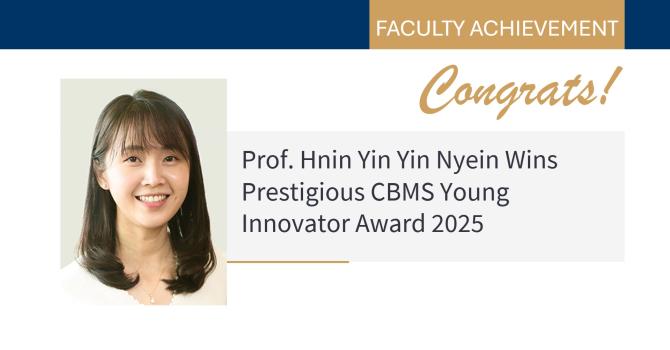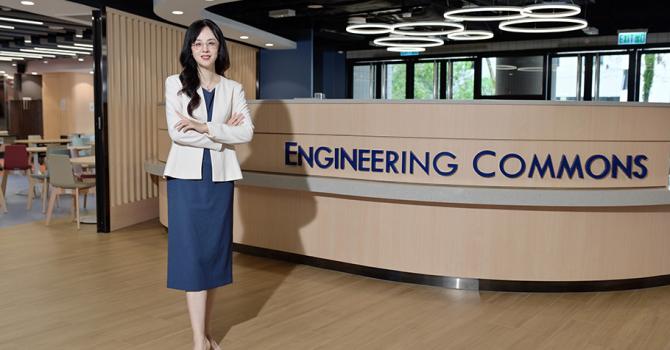Prof. Yao's Innovative Discovery: Ambidirectional Soft Materials for Advanced Applications
Professor Yuxing YAO has successfully developed ambidirectional soft materials that can mimic natural systems. This achievement has led to unprecedented functionalities and applications across various fields, including soft robotics, biomedical devices, adaptive structures, and beyond. Prof. Yao’s entire academic journey has always revolved around chemistry and biology. From Tsinghua University’s chemical biology to Stanford University’s booming realm of polymer materials, followed by doctoral research at Harvard University that centered on biomimetic soft matters, particularly in creating synthetic systems inspired by natural structures like sunflowers and their stoma, Prof. Yao has continued pushing boundaries with his research in synthetic biology and ultrasound technologies for biomedical applications at the California Institute of Technology (Caltech) before joining the Department of Chemical and Biological Engineering (CBE) at HKUST.
The Creation of Self-regulated Artificial Muscles
Published in @ScienceMagazine, Prof. Yao and his colleagues have explored how uniform synthetic materials, specifically end-on liquid crystalline elastomers (LCEs), can exhibit logical behavior. By adjusting molecular interactions and polymer stress, they discovered unique phase behaviors different from traditional systems. Simply by aligning molecules differently, these materials can change shape in various modes when exposed to heat, light, or solvents. The team also demonstrated how these materials can be used as artificial muscles and biomimetic machines, showcasing the practical applications of their research.
Implications: Now and the Future
This research holds significant implications in four major areas. Firstly, it streamlines biomimetic soft robot creation by enabling intricate, self-regulated motions with a single material, simplifying design and control over multi-material methods. Secondly, it advances soft robotics by allowing diverse deformations within one material, potentially leading to more lifelike movements for improved performance in intricate tasks and environments. Thirdly, the adaptability to multiple stimuli such as heat and light suggests potential applications in smart materials and actuators for industries ranging from aerospace to biomedical engineering, enabling the development of adaptive structures and responsive systems. Lastly, the precise molecular-level control achieved in this research facilitates the creation of micro- and nano-scale actuators, with implications in targeted drug delivery, minimally invasive surgery, and microfluidics.
Future research will aim to create more complex molecular structures for soft materials, imitate detailed biological movements in material development, and investigate using these materials to build various actuation/swimming mechanisms for biomedical microrobots. These research directions will have a profound impact on various sectors, such as the healthcare industry for prosthetic and assistive devices, as well as aquatic soft robotics for applications in underwater maintenance and rescue operations.
Key to Success: Collaboration
With a high aim to make synthetic soft materials exhibit life-like behaviors, Prof. Yao explained that it is extremely challenging to mimic natural logical responses such as how leaves react to temperature changes. Beyond the complex material design, the team’s main challenge was creating materials with different properties at the smallest scales. Prof. Yao emphasized the key to finding a solution was to garner experts from diverse interdisciplinary fields. The collaboration with theoretical teams and the leading labs across different universities has led to the discovery of aligning molecules in a specific way and using phase changes in the material, akin to water transforming into ice or vapor, to achieve directional material actuation. Prof. Yao has attributed the turning point to making this research publication possible to collaboration, emphasizing the value of seeking advice and input from others. As he reiterated,
“Communication is essential in determining failure or success. When I was young, I was very shy and not talkative, but I realized that I could not be an expert in everything. Therefore, it is important to talk to experts and overcome that shyness.”
Finding the Path: Exploration
Prof. Yao encourages successors to explore as it paves the way to uncover personal interests and strengths crucial for shaping one’s career path. As he mentioned,
“Exploration helps you understand yourself. A lot of people struggle to identify where their true passion lies. Why not start by trying and recognizing what they don’t like?”
He further highlighted the diverse academic focuses within professorial roles, some prioritize basic science, while others lean towards applied science. Finding a good match with supportive mentors and conducive research settings can help individuals realize their full potential.
For more information on Prof. Yao’s research, please visit https://www.science.org/doi/10.1126/science.adq6434




